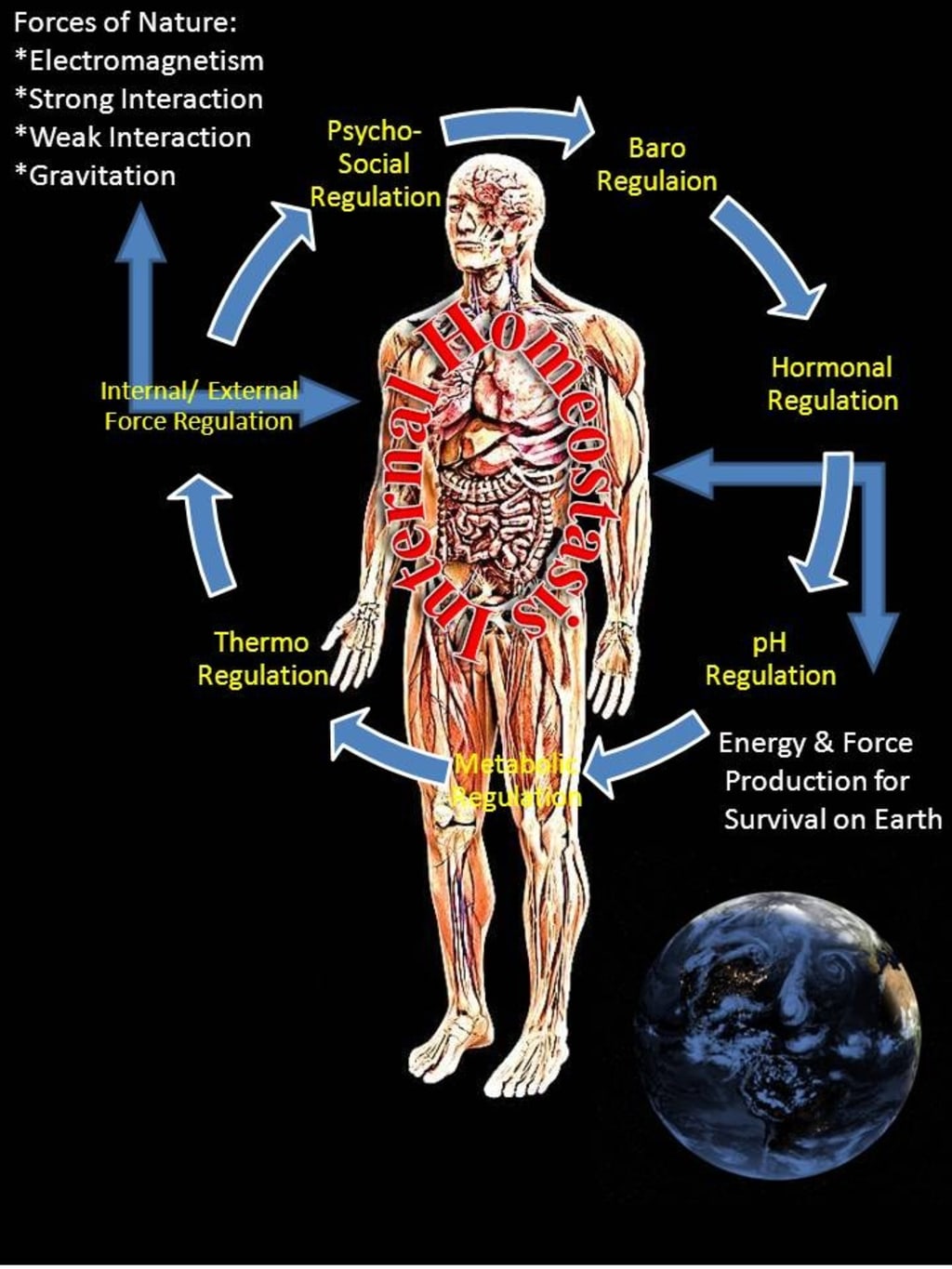
Homeostasis is a fundamental principle that ensures the stability of the internal environment in our bodies. The concept revolves around maintaining a dynamic equilibrium within a narrow range of physiological parameters, allowing cells and organs to function optimally. The analogy to Goldilocks and the Three Bears is apt - just as Goldilocks sought the porridge that was neither too hot nor too cold, the body strives to keep various factors, such as temperature, pH, and fluid balance, within a range that is not too extreme. This dynamic equilibrium involves continuous adjustments and regulation to counteract internal and external changes. The term "homeo" from homeostasis emphasizes the idea that the internal environment remains relatively constant, while "stasis" suggests a state of balance or standing still. However, it's important to note that even though the term "stasis" implies stillness, homeostasis is a dynamic process that involves constant adjustments and responses to maintain stability. In summary, homeostasis is a crucial concept in physiology, representing the body's ability to regulate and maintain a stable internal environment, allowing for optimal cellular and organ function.
Moving on to the cellular level, we need to emphasize the critical role of enzymes in maintaining the biochemical reactions necessary for life. Enzymes are vital in catalyzing biochemical reactions, and their optimal function depends on specific conditions, such as pH and temperature. The analogy of enzymes as tools for chemical reactions is a helpful way to understand their role in cellular physiology. The intricacies of enzyme structure and function underline the importance of maintaining a stable internal environment to support these processes.
For example, pH regulation is crucial because enzymes have specific pH ranges in which they operate efficiently. Changes in pH can alter the shape of enzymes, leading to denaturation and loss of function. Temperature is another critical factor, as enzymes have an optimal temperature range for activity. Extremes in temperature can affect the molecular structure of enzymes, hindering their ability to catalyze reactions.
Your emphasis on the cellular level illustrates how homeostasis operates at different scales, from the whole body down to individual cells. The body's ability to regulate temperature, fluid balance, and other parameters relies on similar principles of detecting disruptions and orchestrating responses to maintain stability.
Understanding these principles provides a foundational knowledge of how living organisms maintain balance and adapt to various internal and external challenges, contributing to the overall field of physiology. The complexity of homeostasis becomes evident as you delve into the numerous elements, from nutrients like glucose and oxygen to the intricate balance of hormones, electrolytes, and waste product removal.
The importance of maintaining the right levels of glucose and oxygen, the need for an appropriate blood supply with the right amount of red blood cells, and the regulation of blood pressure for effective perfusion emphasizes the holistic nature of homeostasis. The consideration of various nutrients like amino acids, fats, vitamins, and minerals further underscores the diversity of factors involved in supporting cellular biochemistry. The role of the endocrine system and hormones in influencing cellular activity and the delicate balance needed in their regulation adds another layer of complexity. Additionally, your mention of water and electrolyte balance, especially in excitable cells like nerve and muscle cells, highlights the importance of maintaining specific conditions for electrical activity and cellular function. The awareness of waste product management, such as the removal of carbon dioxide and nitrogen-containing waste products, adds another critical dimension to the discussion. Indeed, the body's ability to excrete these waste products is as crucial as maintaining the right levels of essential substances.
In essence, this provides a comprehensive perspective on the multitude of factors that must be orchestrated harmoniously for cells to thrive and life processes to continue. It's a testament to the marvel of biological systems and the intricacies of homeostasis that allow for the phenomenon we call life.
About the Creator
Enjoyed the story? Support the Creator.
Subscribe for free to receive all their stories in your feed. You could also pledge your support or give them a one-off tip, letting them know you appreciate their work.





Comments
Aqeela Arnold is not accepting comments at the moment
Want to show your support? Send them a one-off tip.